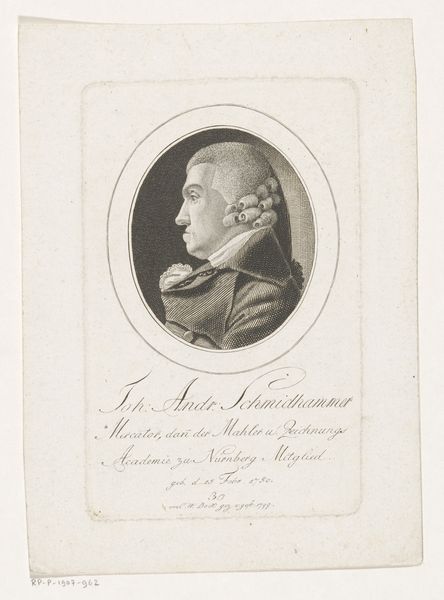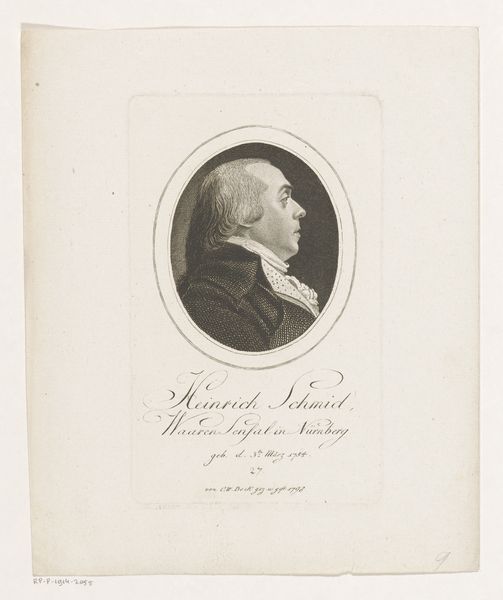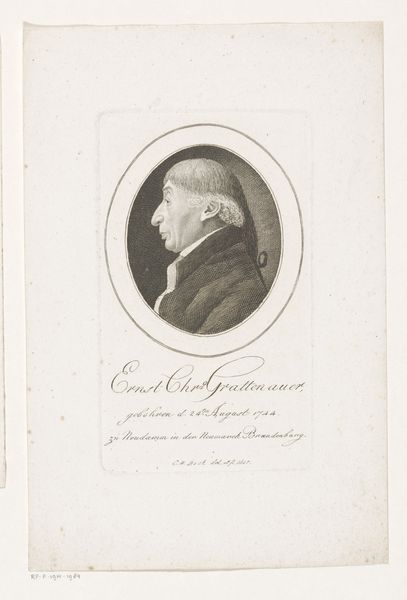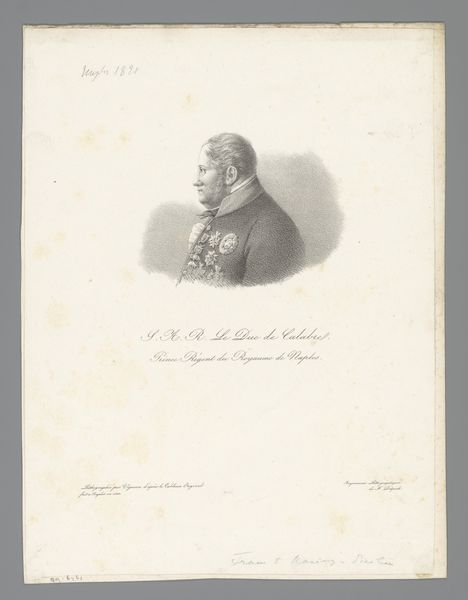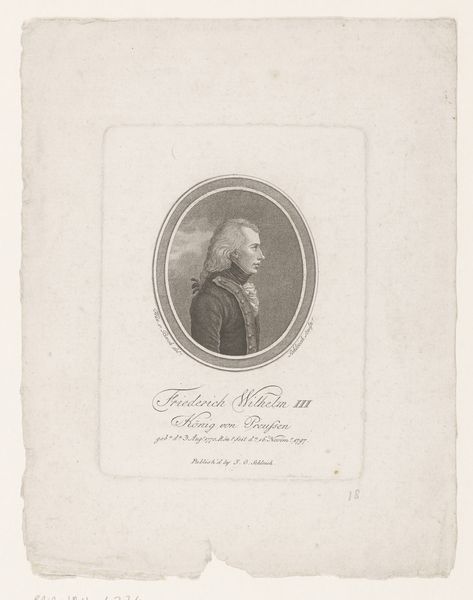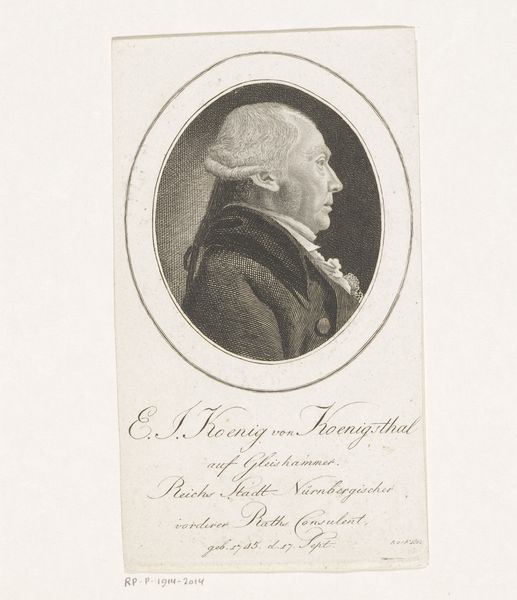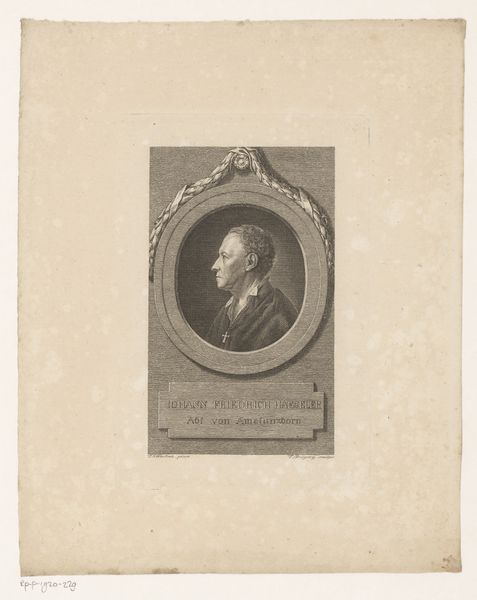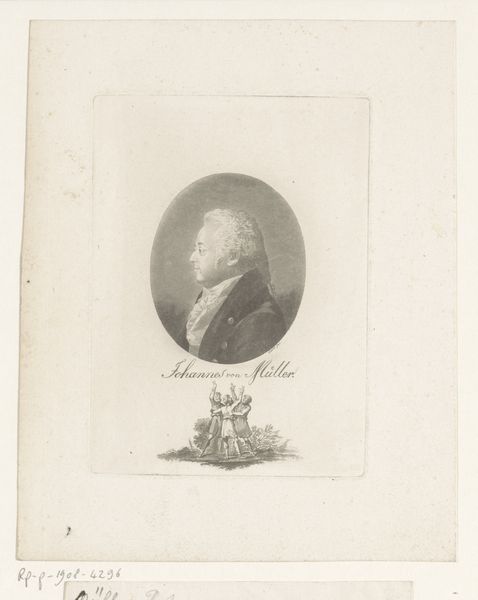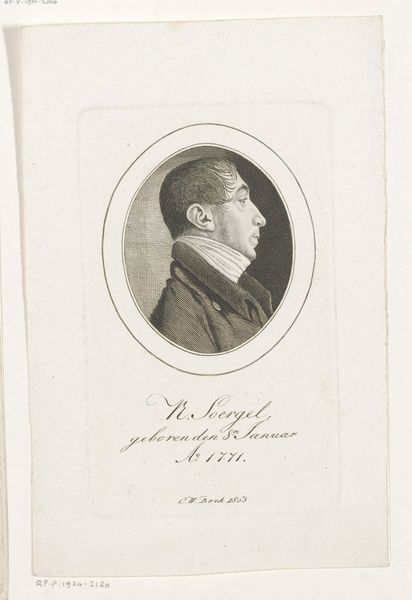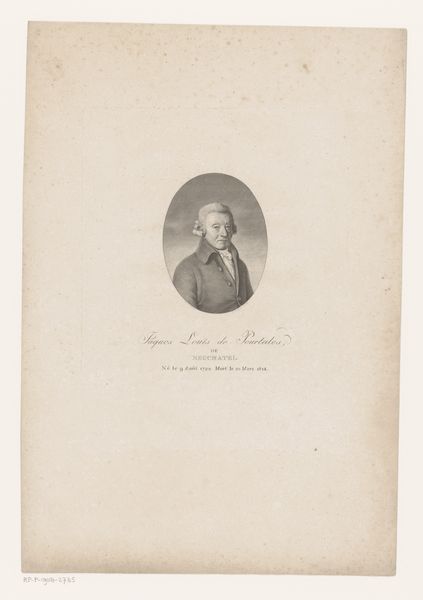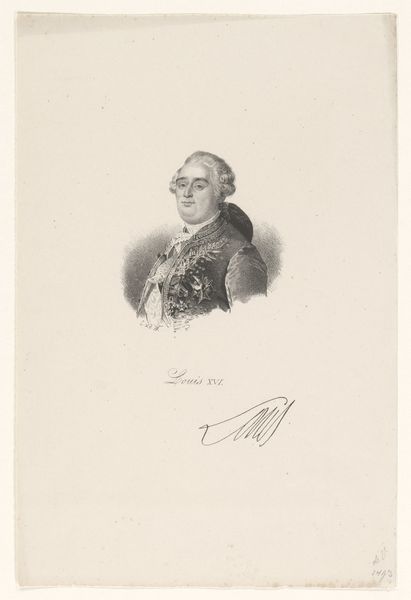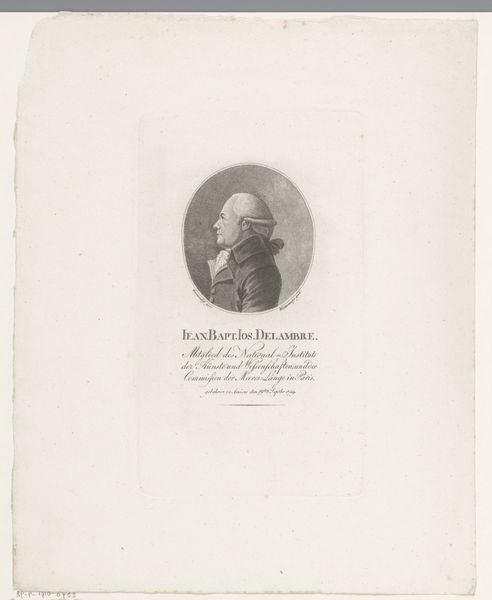
drawing, print, ink, engraving
#
portrait
#
drawing
#
neoclacissism
# print
#
ink
#
engraving
Dimensions: height 148 mm, width 97 mm
Copyright: Rijks Museum: Open Domain
Christoph-Wilhelm Bock etched this portrait of Erhard Christian Jordan in 1778. The print is made from a metal plate, likely copper, carefully incised with lines to hold ink. Look closely at the details rendered with such precision: the sitter’s gaze, the folds of his clothing, and the texture of his hair. The process of etching, with its reliance on skilled labor and mechanical reproduction, democratized image-making in the 18th century. Unlike unique paintings, prints could be produced in multiples and distributed widely, contributing to a burgeoning culture of portraiture. The lines etched into the plate create areas of light and shadow, giving depth and dimension to the portrait. This was a laborious process demanding technical skill and an understanding of visual representation. Consider the social context: who was Erhard Christian Jordan, and why was his portrait deemed worthy of reproduction? How did the rise of printmaking influence notions of fame, identity, and social status? By examining the materials, processes, and social context of this print, we gain a richer understanding of its cultural significance, challenging the traditional distinctions between fine art and craft.
Comments
No comments
Be the first to comment and join the conversation on the ultimate creative platform.
